RideApart Review: 2016 Suzuki GSX-S1000
With a lightened GSX-R chassis, the wicked 2005 GSX-R1000 motor and an aggressive upright riding position, why were we so surprised that this all-new GSX-S1000 was so much fun to ride?
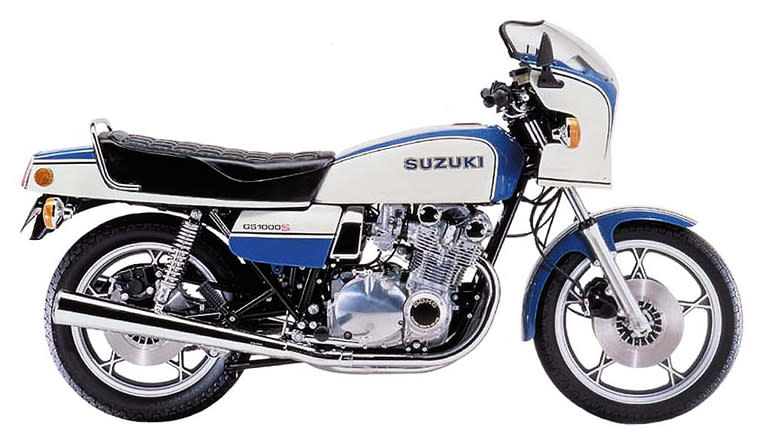
Suzuki Motor Corporation is releasing a bike this year specifically designed for the US sport enthusiast market. Derived from the legendary GS1000S of the 1970’s, the GSX family born in the 1980’s and the racing technology of the current GSX-R line, the 2016 Suzuki GSX-S1000 is the product of best practices and attributes learned over the last four decades. Suzuki’s legacy is based on the inline 4-cylinder naked sportbike, and the GSX-S1000 is an excellent representation of this heritage.
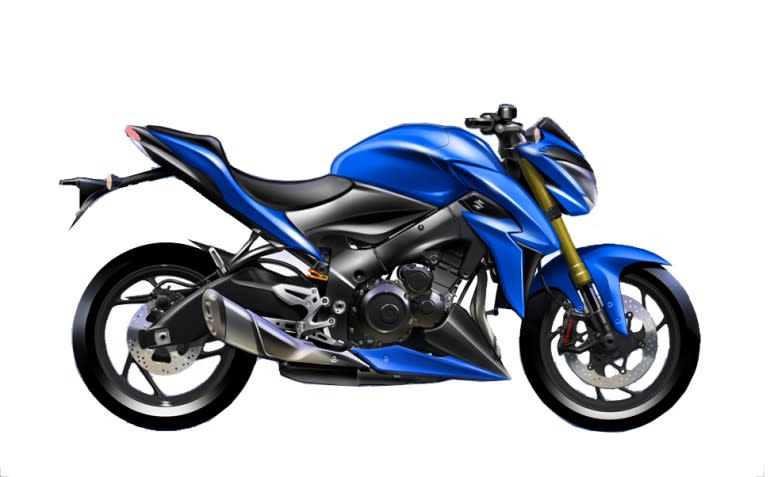
Targeted at riders in the US on the more experienced end of the spectrum looking for a weekend bike to ride aggressively through the canyons, the all-new GSX-S1000 had to hit some key criteria. First of all, the bike needed to be light-weight with nimble handling characteristics. A strong motor must produce solid and smooth acceleration, but maximum power and top speed numbers were less of a concern. Styling and craftsmanship needed to be top notch to warrant this extracurricular purchase. Finally, the price tag must be very competitive in this market of extremely price-sensitive consumers.
MUST READ: So You Want To Be A Bike Builder | RideApart
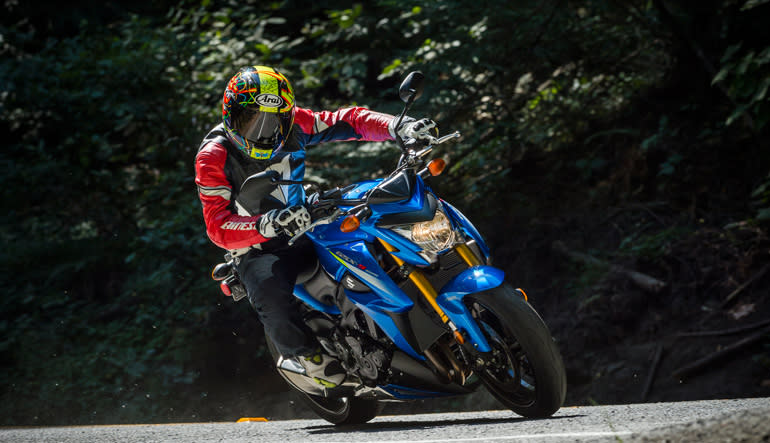
THE RIDE
We rode the 2016 Suzuki GSX-S1000 through the forests, up the hills and along the beaches of San Mateo, Santa Cruz and Monterey counties in central California through perfect 75 degree F weather. The roads were slightly damp in the morning from the marine fog off of the Pacific, but burned off quickly as the sun poked through around 10AM for the rest of the day. Additionally, the back roads we explored were peppered with gravel and sand to further increase the excitement level. Despite these conditions, the GSX-S handled the situations with ease and enthusiasm.
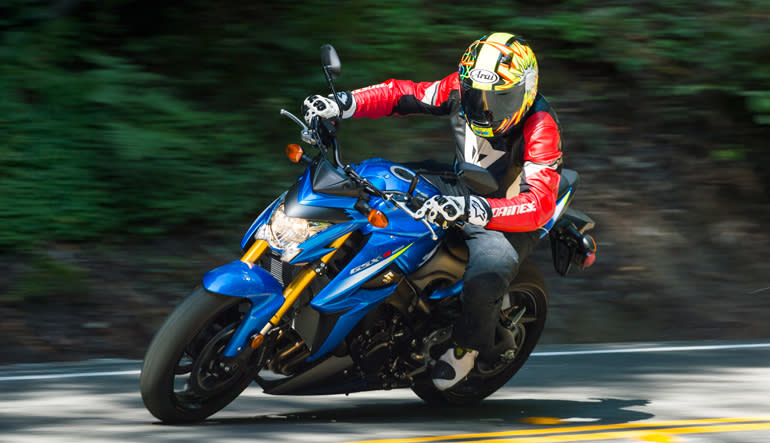
The upright yet sport-oriented riding position of the GSX-S1000 was designed for this exact sort of environment. Thirty inches from the steering stem to the seat puts the rider in a more aggressive position than other naked sportbikes such as the Yamaha FZ-09 which puts the rider in a much more upright stance but hampers performance. The wide dirtbike-style Renthal Fat Bars give the rider plenty of leverage to negotiate the tight corners and loose traction conditions. Finally, the seat material is very plush like on the GSX-R models, but the relatively-extreme riding position did put some strain on the lower back during extended freeway rides.
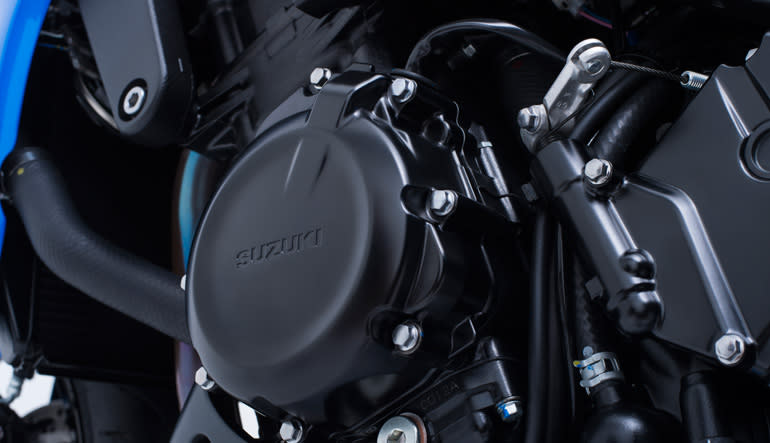
POWERTRAIN
The engine commissioned for the 2016 GSX-S1000 was pulled from the renowned 2005 GSX-R1000 K5 bike mated to the stout 6-speed transmission from the current-model GSX-R1000. Of course, some of the components have been retuned for this naked sport application. For example, the titanium intake and exhaust valves have been swapped out for steel valves of the same dimensions for better operation at lower RPMs during street use. The slipper clutch system on the GSX-R model has been removed and replaced with a traditional multi-plate, wet clutch system operated by a standard cable with a relatively heavy pull. However, improvements in manufacturing processes give the GSX-S1000 lighter-weight pistons than those packed into the GSX-R model.
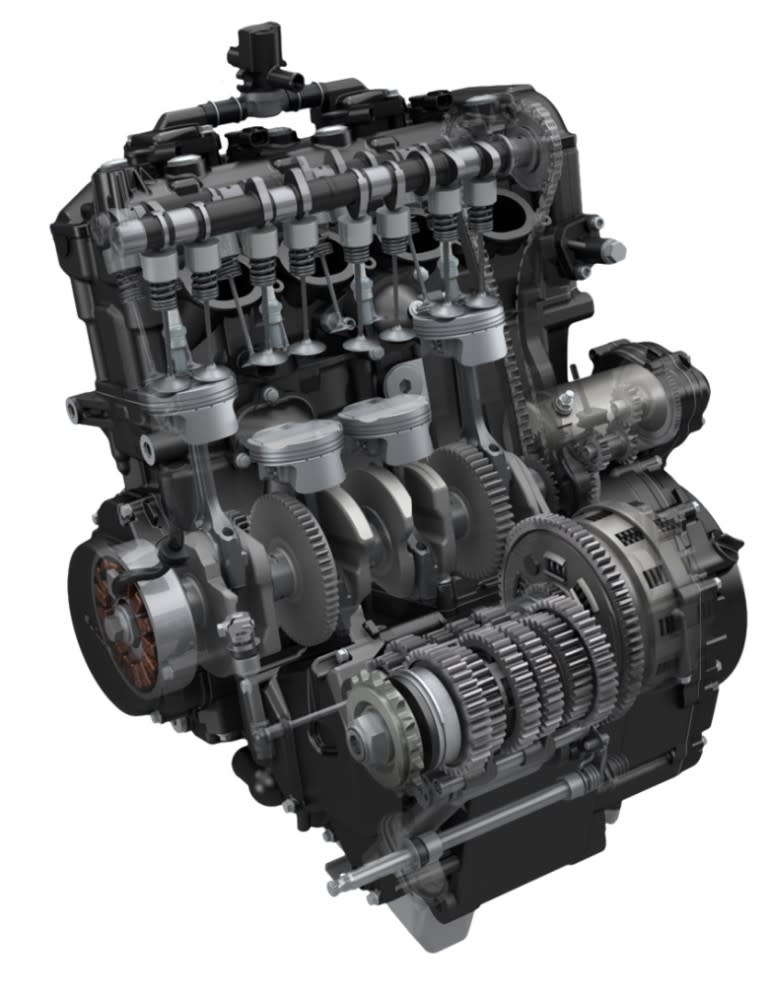
Such refinements result in 145 HP max power at 10,000 RPM and 78 FT/LBS of torque at 9,500 RPM. This is roughly a 10 HP reduction in power compared to the K5 GSX-R, but more peak torque that is delivered earlier than the current GSX-R1000 model. While not the fastest literbike Suzuki has ever produced, power is delivered incredibly smooth and linear without a dramatic power curve spike for which the K5 motor of 2005 was notorious. Power modulation of the traditional cable-operated throttle is a bit on the twitchy side, but ECU-controlled secondary butterflies definitely help smooth things out once the wrist is trained at higher RPMs. The low-mounted exhaust system finishes this powerplant off with a surprisingly aggressive exhaust note.
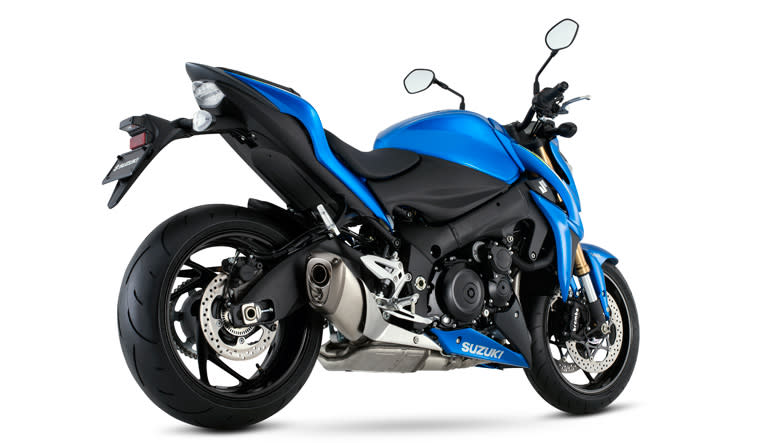
CHASSIS / SUSPENSION / BRAKES
The backbone of the GSX-S1000 closely resembles the chassis of its GSX-R cousin. In fact, since the GSX-S frame does not need to withstand the extreme forces exerted by the GSX-R nor provide the same level of feedback, the twin-spar aluminum GSX-S chassis is actually lighter than that of the current GSX-R1000. However, the swingarm is a carryover part for both models.
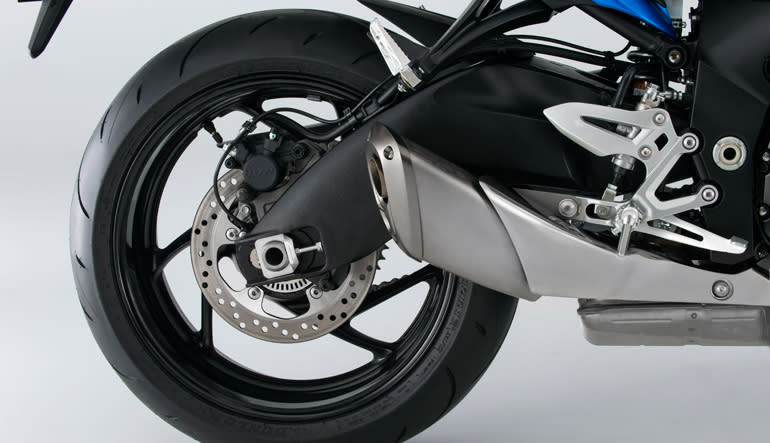
Suspending the swingarm is a KYB shock with adjustable preload and rebound allowing the 190/50ZR17 rear tire 5.1 inches of travel. Up front are fully-adjustable 43mm KYB forks with 4.7 inches of travel straddling a 120/70ZR17 front tire.
During our ride, the suspension was not adjusted from its stock settings, but performed exceptionally well for a naked sportbike not intended for racing. Turn-in was quick, linear and accurate. The front end did not provide a whole lot of feedback and the rear shock was a bit stiff for this 160 LB rider, but the bike still handled extremely well mid-corner and did not want to run wide on exit.
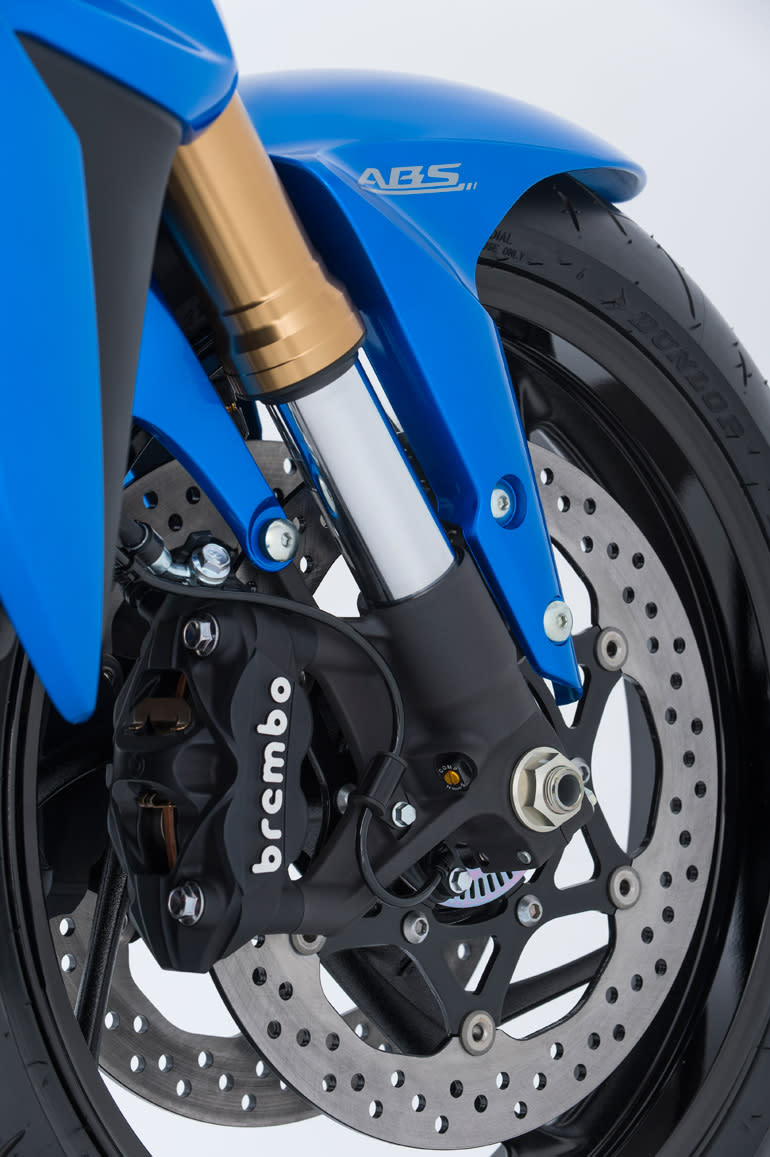
Bringing the bike to a stop was very reminiscent of riding the GSX-R models with the dual 310mm front discs and four-piston monoblock Brembo calipers. The models we rode were also equipped with an optional Bosch ABS system that worked extremely well. Intervention is smooth and manageable while powerful enough to save the rider in slick situations. However, the ABS system does add 4 LBS of additional weight bringing the total package up from 456 LBS to 460 LBS.
MUST READ: First look: Avinton – from France with love and S&S power from Wisconsin! | RideApart
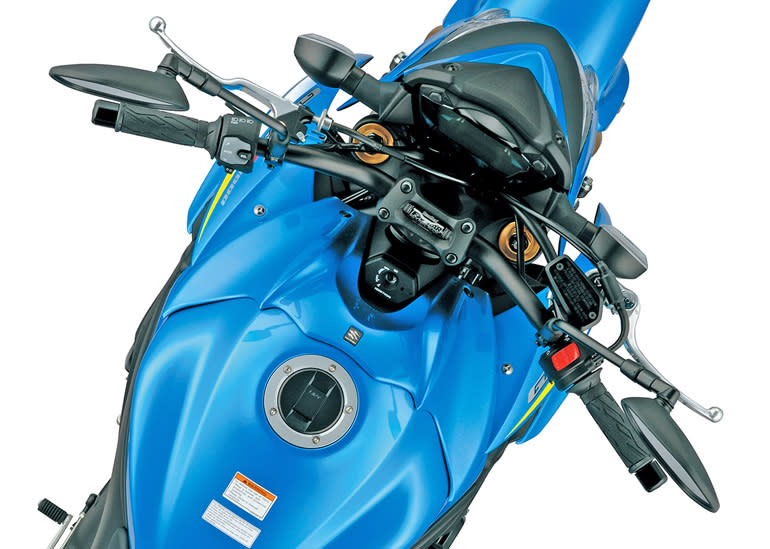
TECHNOLOGY
The most notable component of the technology package on the GSX-S1000 has to be the traction control system (TCS). The system has three modes or can be turned off completely through toggle buttons on the left-hand bar control and clearly displayed on the instrument panel.
It's worth noting that this toggle switch on the left control relocates the headlight high/low beam and pass flash button to a trigger mechanism operated by the left index finger. Regardless, what makes this system especially convenient is how easily the TCS can be adjusted while riding (as long as the throttle is closed) and how these settings are stored in the bike’s memory even after the ignition is shut off (a feature absent from many other high-end bikes).
We rode the bike in “Mode 1” (sport mode) for the majority of the day and felt the system kick in seamlessly during corner exits when hard on the throttle. However, in order to hang some front wheel in the air (something nearly irresistible on this bike format), the TCS had to be switched to “Off”.
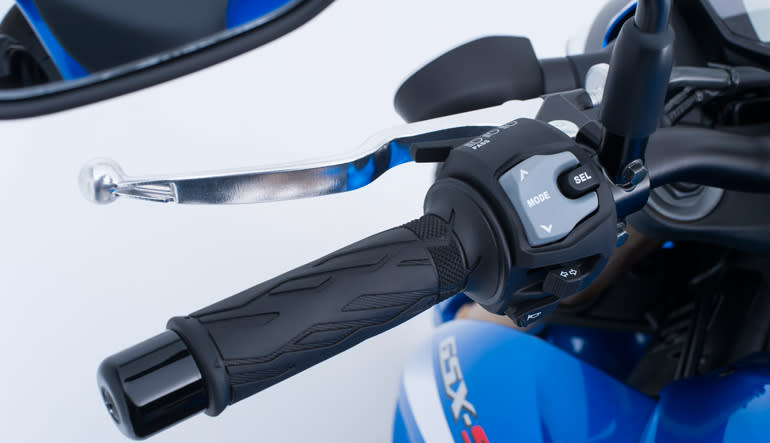

 Yahoo Autos
Yahoo Autos 
